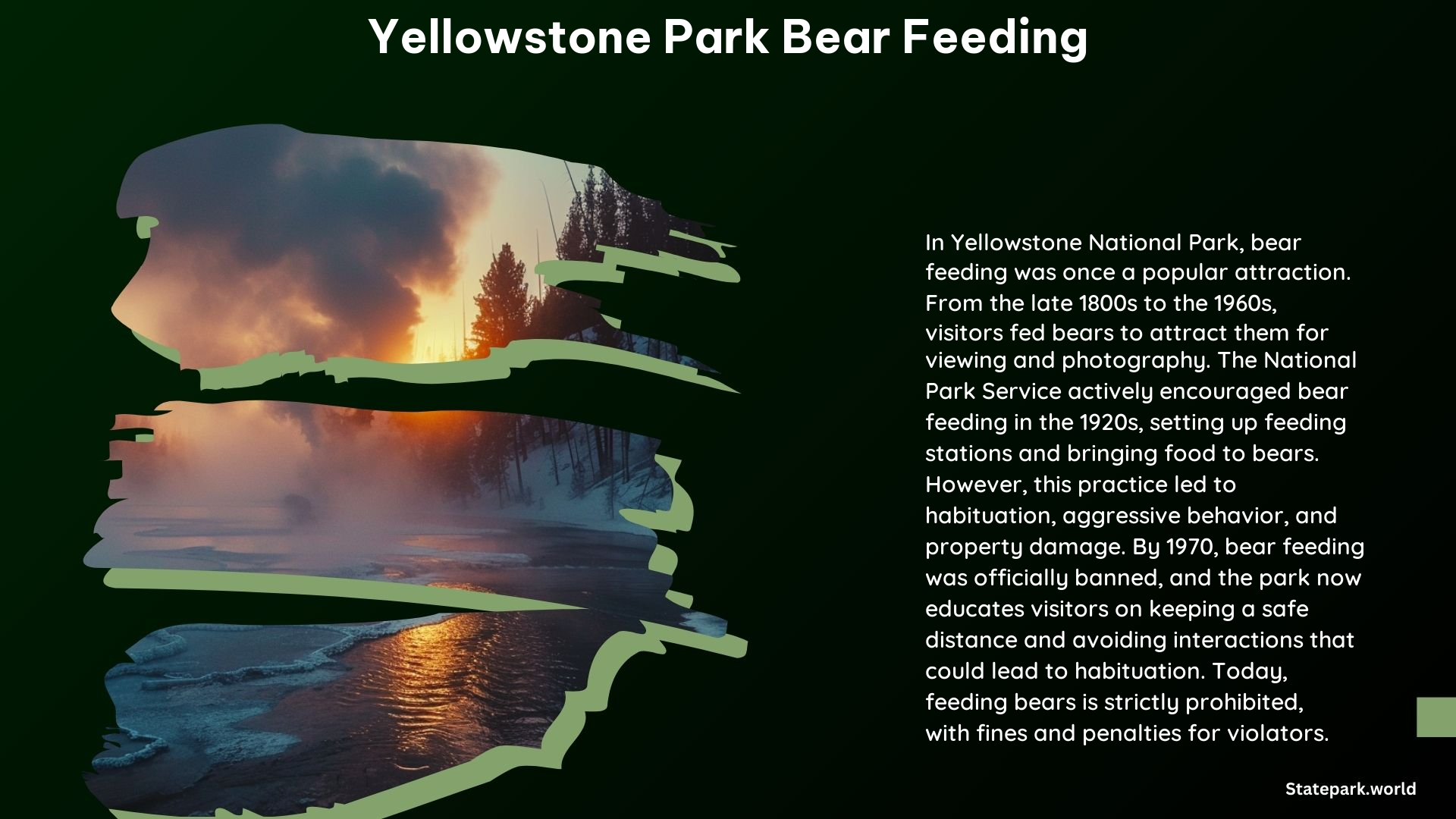Yellowstone National Park has a rich and complex history when it comes to bear feeding. Once a popular attraction, the practice of encouraging bears to feed on human food and garbage has now been strictly prohibited due to the negative impacts it had on the bears and visitor safety.
The Early Days of Bear Feeding (1920s-1960s)
In the early 20th century, the National Park Service actively encouraged bear feeding to attract visitors and generate revenue for the park. Feeding stations were set up, and rangers would bring food to bears to ensure their presence in certain areas. This spectacle became a central part of the Yellowstone experience, with huge pits of garbage set up for bears to feed on. Visitors were often able to get up close and personal with the bears, leading to a popular and well-attended attraction.
The Negative Impacts and the Ban (1960s-1970)

As bear feeding grew in popularity, concerns began to arise about the impact on the bears and their natural behavior. Bears became increasingly habituated to humans and dependent on handouts, leading to a rise in aggressive behavior and dangerous interactions with park visitors. In the 1960s, the National Park Service recognized the negative impacts and began to phase out bear feeding. The practice was officially banned in 1970 to protect both bears and visitors.
Current Policies and Management
Today, feeding bears or leaving food or garbage out in areas where bears can access it is strictly prohibited in Yellowstone National Park. The penalties for violating this rule are severe, with heavy fines and the potential for jail time. The park has implemented a comprehensive bear management program to restore bears to a natural diet and reduce property damage and human-bear conflicts.
The park also focuses on educating visitors on the importance of keeping a safe distance from bears and avoiding interactions that could lead to habituation or dangerous behavior. Strategies include the use of bear-resistant food storage containers, encouraging visitors to carry bear spray, and establishing designated viewing areas.
Unique Experiences
While direct interaction with bears is no longer allowed, visitors to Yellowstone can still have unique bear-related experiences. One such opportunity is at Yellowstone Bear World, where visitors can participate in bottle-feeding bear cubs under the supervision of staff.
References
- https://www.nps.gov/yell/learn/historyculture/bear-management.htm
- https://yellowstonebearworld.com/experiences/bottle-feeding
- https://bearaware.com/2023/05/history_of_bear_feeding/
- https://yellowstoneinsider.com/2016/07/11/old-yellowstone-history-bear-feeding/
- https://www.youtube.com/watch?v=G06mXTwgzdU
